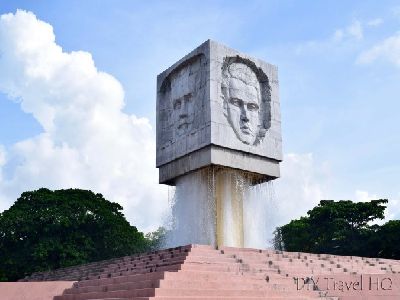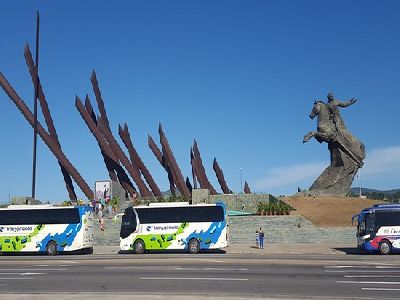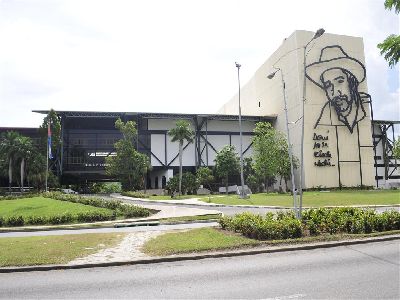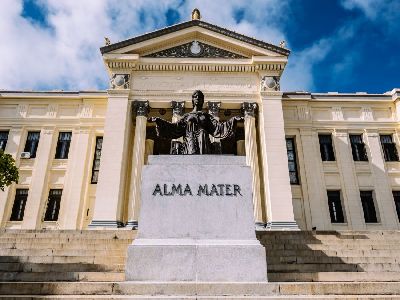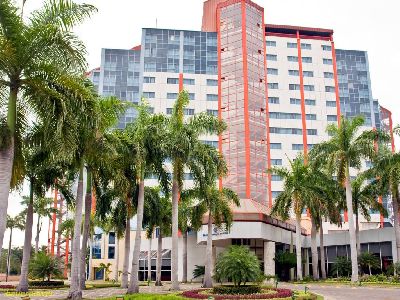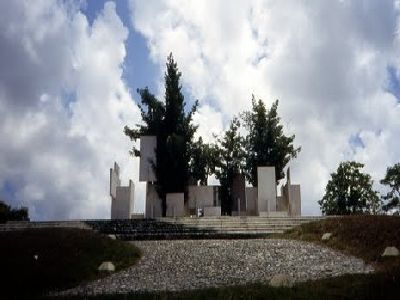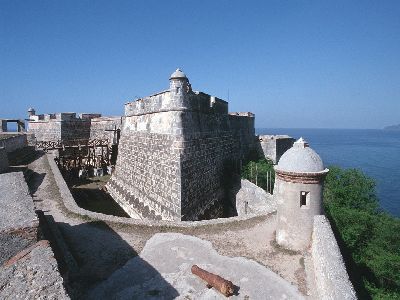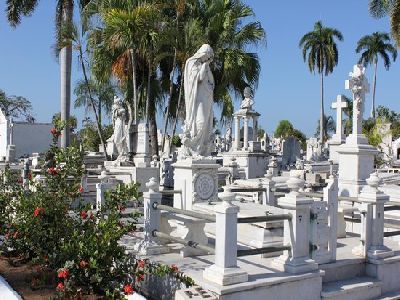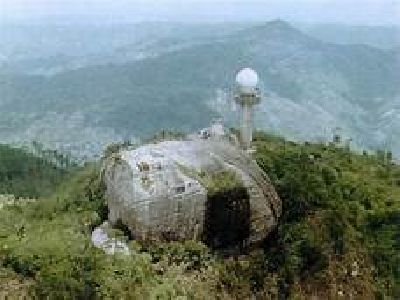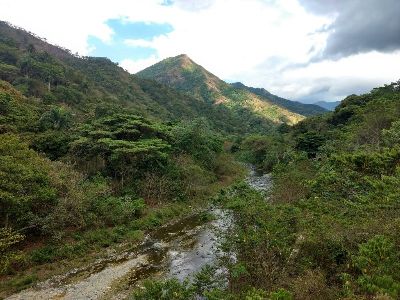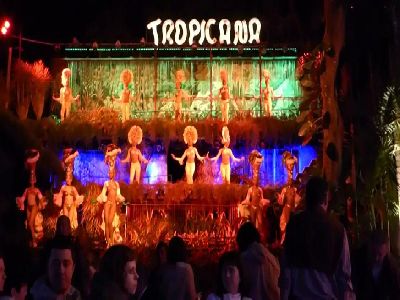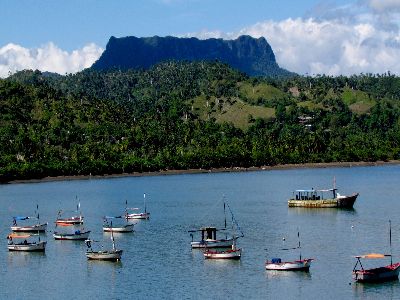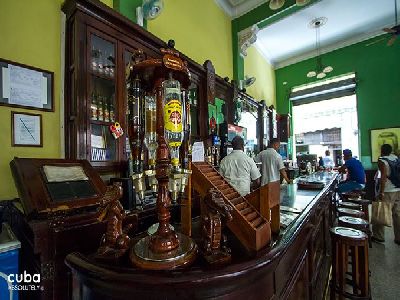Places
Parque Abel Santamaría
This site is composed of a museum, a library and a monument. The institution is located on the site of the ruins of the former Saturnino Lora Civil Hospital, the scene of the armed action carried out on July 26, 1953, and was taken by 23 young people, led by Abel Santamaría Cuadrado.
Months later, on October 16 of the same year, the leader of the revolutionary movement Fidel Castro was judged on these events in a small nurses' study room. In this momentous trial, Fidel delivered...
Plaza de la Revolución en Santiago de Cuba
Located at the entrance of the city of Santiago de Cuba, it is considered the most important monumental work of the twentieth century executed in the city.
In honor of the hero Antonio Maceo, the tallest statue in the country stands 16 meters high, the work of Santiago sculptor Alberto Lezcay.
Inside, using the holography technique, a collection of objects belonging to the Bronze Titan.
Teatro Heredia
It is the most important cultural center of Santiago de Cuba, which is named José María Heredia, the first romantic poet of America.
It is the only theater designed and built in Cuba after the triumph of the 1959 Revolution. Institution specializing in the programming, organization and promotion of artistic shows, exhibitions, festivals, congresses, conventions, conferences, and other events.
It is the headquarters of the EXPOCARIBE International...
Universidad de la Habana
The University of Havana (UH) was founded on January 5, 1728 by the Dominican friars belonging to the Order of Preachers. It is public and is the oldest higher education institution in Cuba, as well as one of the first in America.
Its first name was Real and Pontifical University of San Gerónimo of Havana. At the time universities needed royal or papal authorization, which explains the names Real and Pontifical; Those who authorized the foundation of the university were Pope Innocent XIII and King Felipe V of...
Hotel Melia Santiago
Hotel Melia Santiago, iconic city hotel, the only one of its kind in Santiago de Cuba. The highest level of hotel facilities in the province.
The Level Floor for our most personalized service, which offers exclusivity and privacy. Leading hotel in business and meetings in Santiago. Disco with live entertainment.
Bosque de los Héroes
Cuban monumental and environmental sculpture. First monument built in Cuba to pay tribute to Che Guevara and his fallen comrades in Bolivia.
Castillo San Pedro de La Roca de Morro
The Castle of San Pedro de la Roca or Castillo del Morro as it is also known, is a military fortress located in Santiago de Cuba, Cuba, declared by UNESCO in 1998 as a World Heritage Site.
It should not be confused with Fort San Felipe del Morro in San Juan, Puerto Rico, which in addition to being located in cities of two Caribbean islands and sharing similar names, also in appearance are very similar.
Cementerio de Santa Ifigenia
The Santa Ifigenia Cemetery was inaugurated in February 1868. The first burials take place on April 22 of that same year.
This was the third cemetery officially used in Cuba, after those of Cemetery of Sword and Cemetery of Columbus, which is why much of the past and present history of this Caribbean city is in the stillness and silence of more of its eight thousand graves and other lucrative constructions.
La Gran Piedra
The Great Stone is a huge rock of volcanic gap, 51 meters long and 25 to 30 meters wide, with a calculated weight of 63,000 tons is located on the top of a mountain at 1,225 meters high above the level from sea.
Natural viewpoint from where the Sierra Maestra is observed.
Parque Nacional de la Sierra Maestra
The Great Sierra Maestra National Park was created in 1979 by Law No. 27, which was subsequently repealed. Today it constitutes a Special Region of Sustainable Development that contains the national parks Desembarco del Granma, Turquino and Bayamesa, as well as several other protected areas of local significance.
The area encompassed a relatively large area of wilderness in the Sierra Maestra, the most rugged and most extensive and important mountainous region in the...
Valle de la Prehistoria
The Valley of Prehistory is made up of dozens of life-sized stone dinosaurs.
It was inaugurated in the 1980s and has more than 200 large sculptures representing dinosaurs, mammoths and other species that populated the earth millions of years ago in full size.
Cabaret Tropicana
<p> Its facilities make up the stage under the stars, a restaurant known as Pavo Real, where dishes are offered for the most demanding tastes, although with the predominance of typical national food, and a Patio bar with the name Patricuzao, just like the famous rum that is manufactured in this eastern city and where the visitor will find a pleasant atmosphere and necessary privacy.</p>
El Yunque de Baracoa
The Yunque of Baracoa. It constitutes the most famous elevation of the Guantánamo province. It has a height between 400 m and 575 m, which appears as a result of the differential erosion of limestones. It presents a form similar to that of an anvil of work to strike metals and constitutes a true artistic work of nature.
It is a natural site with degree of protection value 1. Declared a National Monument on December 25, 1979.
It is located approximately 10 km. from the city of Baracoa, Guantánamo.
Restaurant La Lluvia de Oro
La Lluvia de Oro is one of the places that draw attention to those who walk down Obispo Street and stop at the corner of Calle Habana.
Its atmosphere takes us back to the past, but played with the current rhythm of the bustling artery. The Cuban music heard in this place also becomes an attraction for those who decide to stop and taste the offers offered by this cafeteria.
In the year 1900 there was in the property that today occupies this establishment...
